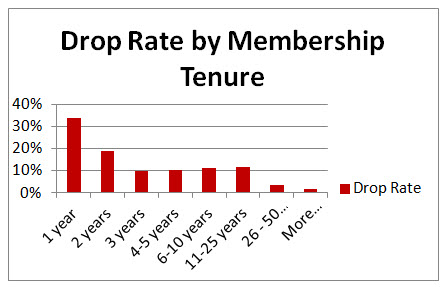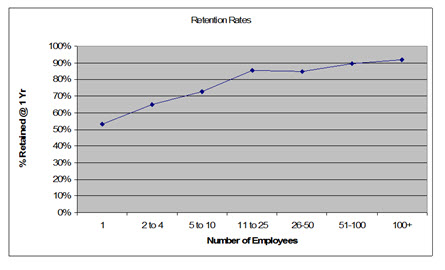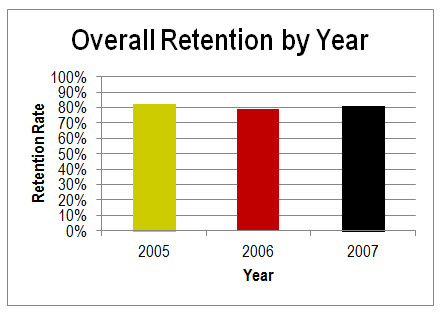There are several reasons why associations experience lower retention rates.
Some of those reasons may be driven by external factors such as economic conditions, disasters that impact a specific area, or challenges faced by an industry sector. An association’s brand may have been compromised in some way due to its leadership or previous actions. Competition, changing values and expectations, and a host of other reasons could play a role in retaining members.
But member retention has been a challenge for associations ever since I can remember, both in good times and certainly in trying economic times. For the most part, retention requires us to know our members, what matters to them and their perceptions about the value of membership. This sounds easier than it really is, right? We serve a diverse membership base with different interests, values and expectations.
Yet, we tend to look at our retention rate based on an overall number.
Whether a retention rate is 89% or 78%, there are so many factors that influence that total number. Knowing the answers to these two questions can be important to understand what might be creating the outcome:
- “Which of your members are driving the retention rate as high as possible?”
- “Which of your members are dragging the retention rate down?”
The reality is that you don’t have a retention problem with all members, just specific ones, and to improve your overall rate requires understanding of what’s really driving the outcomes. Before you can design strategies to increase your retention rate, you need to understand the problem or the “root cause.” Even though association professionals are seeking the “silver bullet” that will solve their retention problem once-and-for-all, the reality is that a silver bullet doesn’t exist.

Maybe digging into your own database might yield some interesting information. Conducting a ‘retention audit’ is a way to compare rates among different segments of members. Run reports that allow you to compare the retention of members based on Join Date, Dues Level, Industry/Category, Zip Code, Number of Employees, Date Established (business start year), and Annual Engagement. These reports could help you to answer the two big retention questions posed above. Based on the reports, consider:
- For those members with the longest and shortest tenure, what do they seem to have in common?
- Does Engagement Level impact retention rates?
- How are recruiting patterns linked to the retention rates (by Dues Level, FTE, Date Established)?
- Are patterns different from one year to the next, or do they reflect trends that are the same?
By running these reports, you’ll realize retention rates and trends by specific segments of your membership base. You should find common patterns that will help you to answer questions. Look at these examples of different charted segmentation reports and how they provide additional insights on retention patterns.


Once you know these retention trends, what should you do with this information?
After you know more about what’s driving your retention rate, you can decide on different approaches that may influence more positive outcomes. You can set retention goals, determine strategies to achieve them, and develop an implementation plan based on your resources.
Your new course of action should include metrics that help you to monitor and determine if the strategies are influencing intended outcomes. Metrics could include e-mail open rates, response to calls for action, survey responses, and engagement. These metrics may indicate a higher propensity for at-risk members to renew although the ultimate metric will of course be the renewals.
Leveraging your database is the first step to understanding your retention patterns and possible challenge areas. There are certainly other factors and analysis that can be performed to gain a clearer picture of what’s driving your retention rates. This is just the beginning of the journey!
Cathi Hight helps associations manage constant change, deliver benefits that members value and effectively communicate the value of membership. She is Senior Vice President of Growth Strategy for the Greater Austin Chamber and President of the Hight Performance Group. Cathi is the developer of The Member Retention Kit and A New Approach to Tiered Membership. Learn more at www.hightperformance.com.


